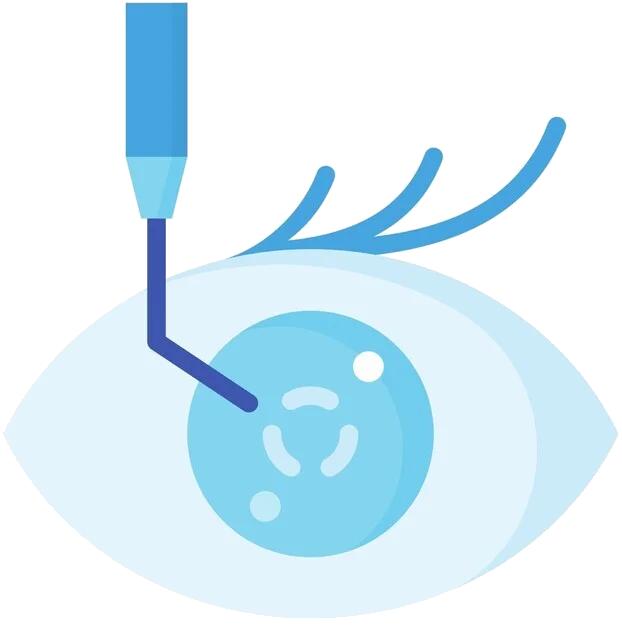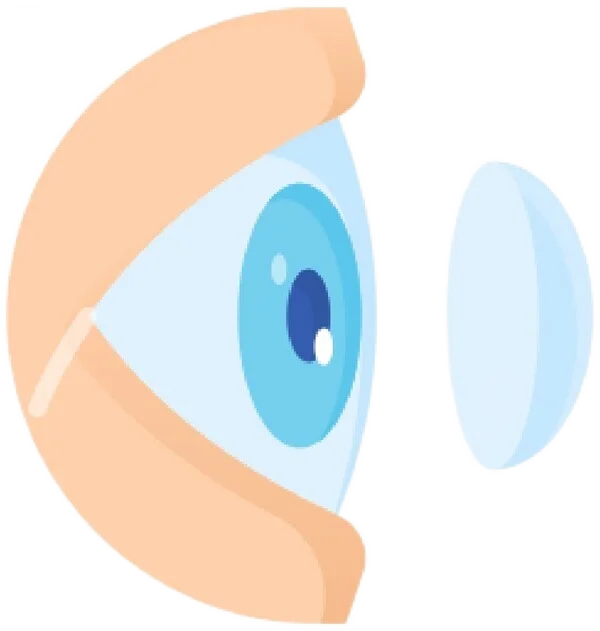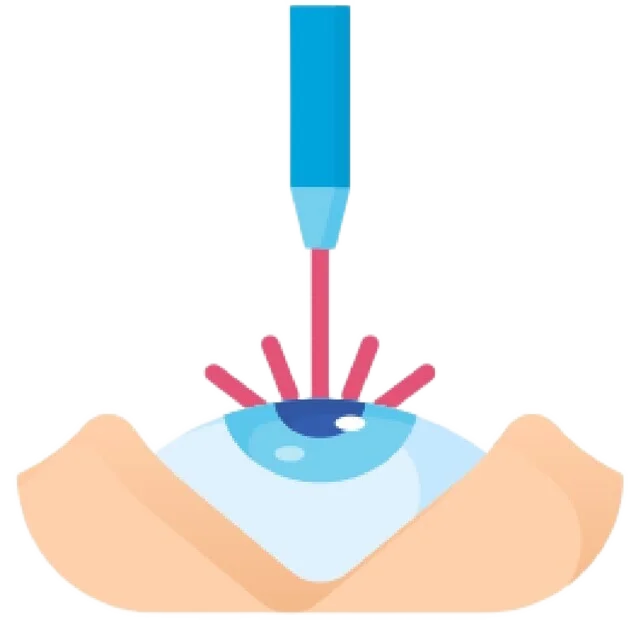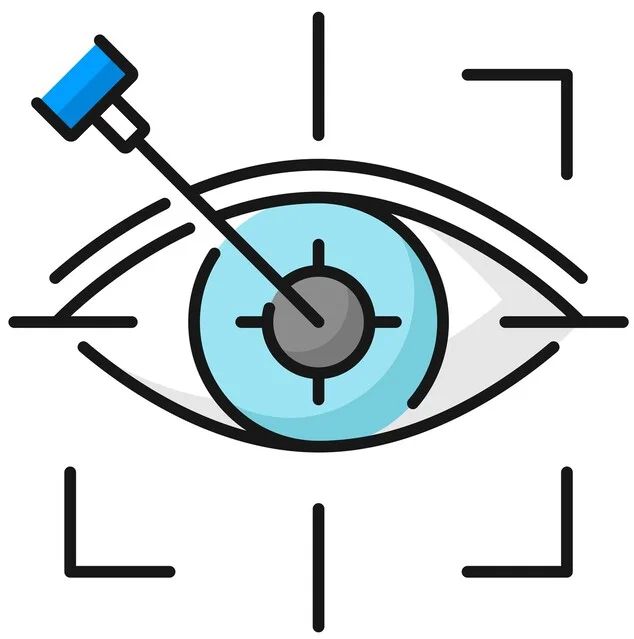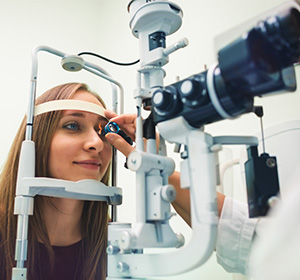
Mr. Mo Majid’s eye clinic in Bristol, Newport, Cardiff and Swansea is also a centre for general diagnosis and treatment of eye disorders.
Along with complex surgeries and treatments Mr. Majid can see and treat glaucoma, blepharitis, dry eyes, blurred vision and any other eye related disorders.
Eye examinations are also conducted for medico-legal purposes.
Refraction, intraocular pressure and slit lamp examinations are also measured.
Specialised tests like optical coherence tomography, fluorescein angiography, gonioscopy and ultrasonography are also performed.
Our expert surgeon responsibly selects appropriate tests and procedures to give you the reassurance for healthier and better vision.
What is General Eye Examination and Care?
The General eye examination is more than just getting your eyes checked for a lens prescription. It involves several tests to check your eyes for vision and for any eye disease.
The first comprehensive eye examination of the child should be done at 3 years unless some eye problem is noticed before that. Your ophthalmologist will check for normal 20/20 vision, lazy eye and crossed eye.
If any vision problem is found the next regular eye check-up should be done as advised by your doctor. If not, the next eye check-up for the child should be done every two years. Early detection of any eye problem will help to provide timely treatment and thus will prevent deterioration of vision.
Adults with normal vision in the age group of
- 20 to 40 years should go for a general eye examination every 5 years.
- 40 to 65 years should go for it every 2 years.
- The above 65 years should go for it every year.
In case you have a family history of eye disease or vision problems or chronic diseases such as diabetes that may affect vision, more frequent eye checkups would be required.
When you go for your eye examination the doctor will ask you about any vision problems you are facing or have had before and also about family history of diabetes, high blood pressure or heart disease.
You should take your eyeglasses or contact lenses if using them along with you when going for the general eye examination.
Which are the General Eye Examination Tests?
The general eye examination includes several tests that ascertain the health, function, and appearance of different parts of the eye. They are:
- Visual acuity test: It checks how well you can see from a distance of about 20 feet. You are asked to read aloud the letters written on a chart or screen (Snellen chart). The letters decrease in size as you read from the top line to the bottom line.
- Eye muscle test: It checks the function of the eye muscle used for movement of the eye. The doctor checks it by asking you to look at the pen or any other object without moving the neck when the doctor moves it in certain directions.
- Refraction test: It determines whether you need corrective lenses or your vision is normal. In case you need corrective lenses, it determines the prescription of the lens that will give you the best possible vision. Your doctor may use a computerised refractor or retinoscopy to determine your prescription for corrective lenses.
In retinoscopy, the doctor shines a light into the eye after dilation and estimates the refractive error. Then fine adjustment for the prescription is done by making you decide which of the lenses when used in a mask-like device -Phoroptor gives you the sharpest vision. - Visual field test: It measures the peripheral or your side vision. It may be done using automated perimetry in which you will be asked to see into a special instrument that flashes light. If you see the light you have to press the button.
It may also be determined by a confrontation visual field exam in which you cover one of your eyes and look at your doctor’s hand as it moves inward and outward from your visual field. You should tell your doctor when you are able to see his hand or fingers. - Colour vision test: In this test, the doctor will show you certain multicoloured dot patterns. In case you have a certain colour deficiency you will not be able to see certain patterns in those given sheets.
- Slit-lamp examination: You are asked to sit and rest your chin and touch your forehead on the slit lamp. It magnifies the image of the eye and allows the doctor to look for any problem of the cornea, lens, iris and anterior chamber of the eye.
Sometimes the doctor may stain the tear film of the eye with a fluorescein dye by using eye drop containing it or by using paper strip before examining through the slit lamp to look for cuts, foreign objects or infections of the cornea. - Retinal examination: Retinal examination is done to check for the disease of the retina or optic nerve present at the back of the eye. The doctor will try to see the back of the eye using an ophthalmoscope or slit lamp following the dilation of the pupil.
The doctor may also choose to do an indirect examination by using a bright light mounted on the head while each eye is kept open during the examination.
The eye drops used for the examination will cause blurred vision and sensitivity to light for several hours even after the test. The effect will go away after a day or so. - Glaucoma test: It is used to measure the internal eye pressure. It can be measured by:
- Noncontact tonometry: Here the blow of air on the eye is used to measure the eye pressure.
- Applanation Tonometry: First your eye is numbed using eye drops. The eye drop also contains fluorescein to see the tear film. Gentle pressure is applied by touching the cornea using a tonometer and eventually the amount of force required to flatten a part of the cornea temporarily is measured. The procedure does not hurt.
- Pachymetry: After numbing the eyes an instrument is used to measure the thickness of the cornea. It uses ultrasound waves to measure the same as corneal thickness is one of the significant factors that affect intraocular pressure.
Your doctor will provide you with the results of the tests within a few days. In case any vision problem is detected the doctor will give you a prescription for corrective glasses. However, if any eye disease is detected or suspected you may be asked to go for a specific eye test to confirm the initial finding.


